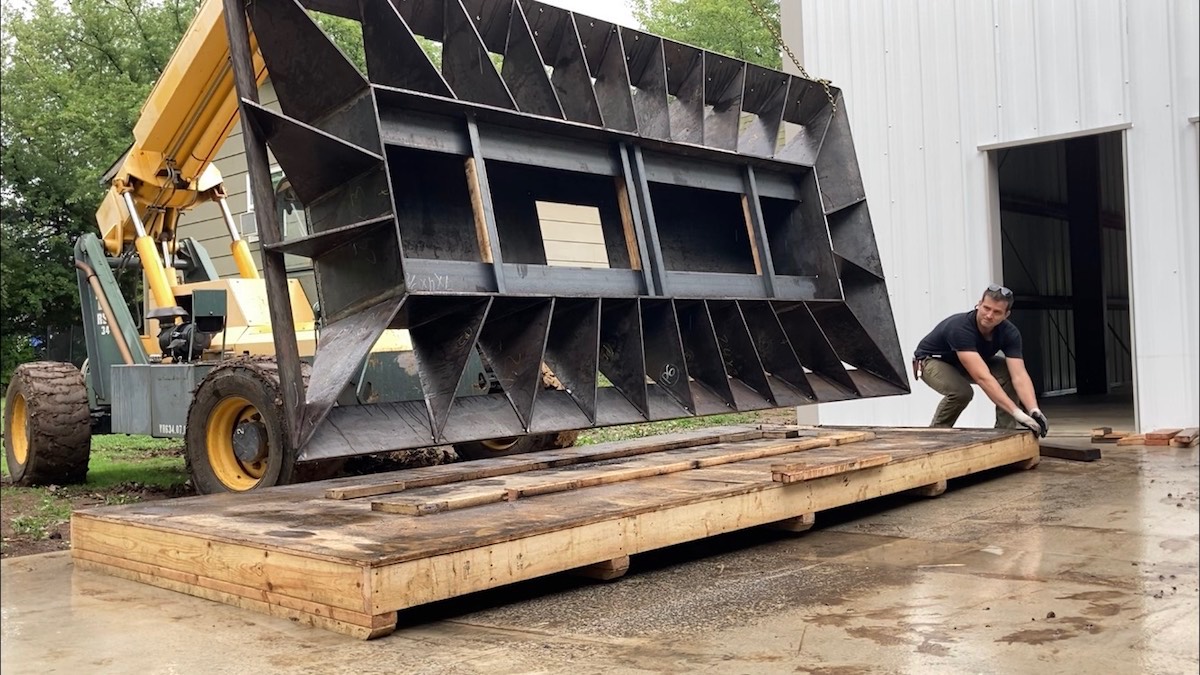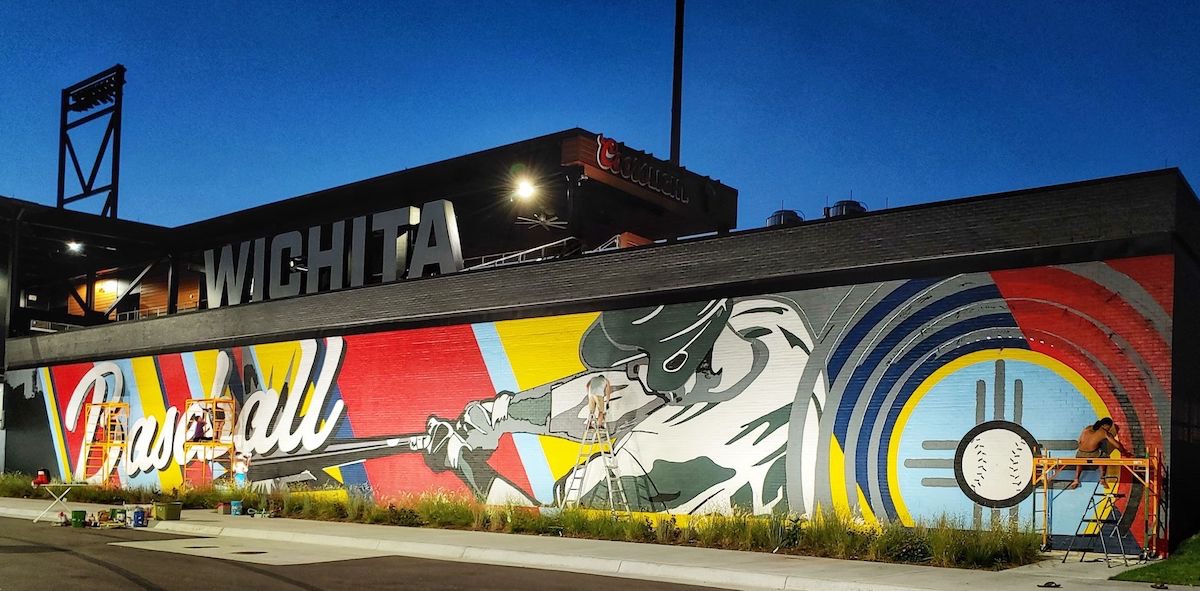Lawrence-Dumont Stadium largely defined baseball in Wichita for 84 years. That sense of permanence attracted artists to contribute to the projects that will decorate Riverfront Stadium, Wichita’s new home for professional baseball.
Wichita State University’s art community plays a significant role in the look that will highlight the motion of athletes, balls and bats that characterize the sport.
“I knew it was going to be something that would outlast all of us,” said Chris Garcia, mural painter and owner of Brickmob. “I used to come to Lawrence-Dumont Stadium with my grandpa all the time. I was sad to see the old one go, but this one is very beautiful.”
Garcia is one of several artists with Wichita State connections involved in the public art projects in and around the new stadium. Riverfront Stadium, home of the Wichita Wind Surge minor-league professional team, was completed last spring. Because of the COVID-19 pandemic, the stadium went unused in 2020.
“It will be there longer than I am and that feels good, too,” said Brady Hatter, a sculptor who is giving the Lawrence-Dumont Stadium sign that marked the corner of Maple and Sycamore streets a new look. “There is beauty in the ephemeral, but there is also beauty in that kind of legacy where my kids can show their kids something.”
Several of the public art projects are visible outside the stadium and more are scheduled for installation in the coming months. All of the artists are local or regional.
“It’s undeniable that public art is a huge part of our cultural identity,” said Elizabeth Stevenson, an architectural designer at SJCF Architecture who worked as art consultant on the project. “It shows we are placing value in quality of life issues. Both the city and the team have been really enthusiastic supporters of the public art.”
Wichita’s Percent for Art Program, approved in 2019 by the Wichita City Council, allots 2% of public project funds to a pool of funding for public art. A six-person committee, with three representatives from the Wind Surge and three from the city, set guidelines for the art project.
“We wanted all of the art to look like it belonged there,” said Cindy Claycomb, city council member and a Wichita State graduate. “We developed an over-arching theme for the art. It was thinking about forward movement, this connection to baseball and how we have art that is connected to those things.”
Garcia, a 2015 graduate with a degree in graphic design, designed the mural on the Maple Street side of the stadium. It is 156 feet wide by 20 feet tall and represents the history of baseball in Wichita. His Brickmob crew features five others who attended Wichita State.
Work started on July 31 and Garcia estimated it took around 500 hours and 30-plus gallons of paint to complete.
The mural features a baseball player swinging a bat, an image inspired by 1950s baseball cards and the classic look of graphic vacation post cards. The nine colors on the mural pay tribute to previous teams such as the Aeros and Wranglers. A timeline lists those teams, including lesser-known minority teams such as the Monrovians and Aztecs.
A selfie station will give people a chance to interact with the art.
“I wanted to draw people in,” Garcia said. “I wanted this to scream at people, ‘Hey, this is our new stadium.’”
Nearby the mural is a stand ready for Hatter’s update of the sign, a cast concrete frieze featuring baseball action. Hatter graduated in 2009 with a bachelor’s of fine arts in sculpture and created the three metal pods that decorate Wichita State’s campus.
Hatter’s work elevates and frames the original sign – designed by local artist and Wichita State Master of Fine Arts graduate Randy Julian – much like a jewel is mounted. The half-inch plate steel frame will direct eyes to the action contained in the frieze. Passerbys will see the color of the frame change from copper to black as their point of view changes.
“This is taking a sign and making it a sculptural sign,” Hatter said. “I’m honoring Randy Julian, who I grew up around and was inspired by.”
Stephen Atwood, a 2005 MFA graduate of Wichita State, Kent Thomas Williams and Eric Schmidt are collaborating on a light sculpture in three parts (“Triple Play”) that will hang in the south entrance on Maple. Each piece is four feet in diameter by 12 feet tall and uses light and stainless steel to celebrate the movement in baseball and attract attention from far outside the stadium.
Williams said the light levels will be programmed to react to data such as pitch counts and game patterns.
“What’s unique about baseball is you’re paying attention while there’s a calm,” Williams said. “You’re always sort of ready. We wanted our pieces to reflect this, represent that dynamic excitement that you feel when you hear the ball hit the bat. Bam, something is happening.”
 Courtesy photo
Courtesy photo

 Courtesy photo
Courtesy photo